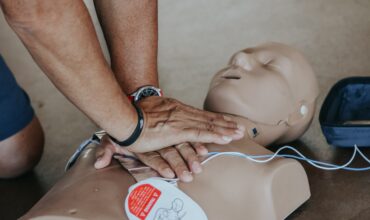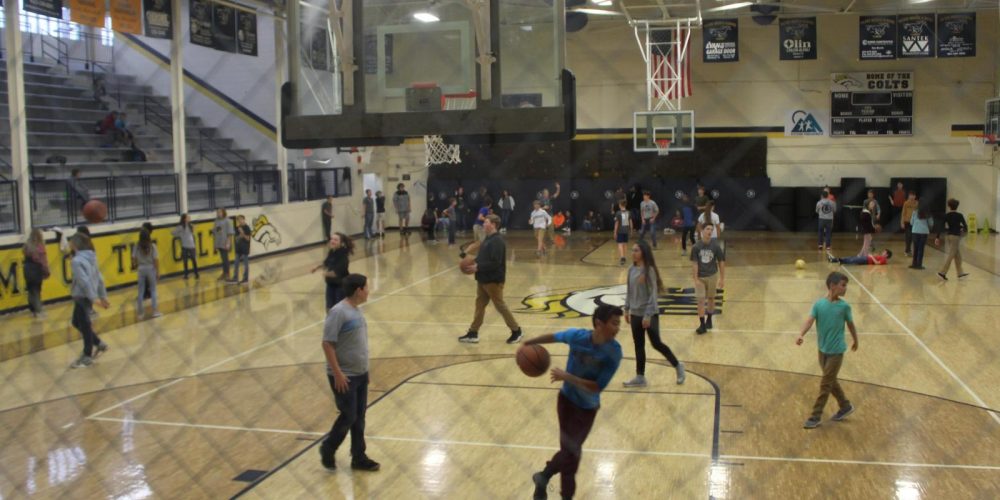- Your cart is empty
- Continue Shopping


A recent and unexpected cardiac episode involving NBA star LeBron James’ son, Bronny James, has once again put a spotlight on the dangers of cardiac arrest.
The 18-year-old basketball prodigy was rushed to the hospital after experiencing a cardiac event during a workout at the University of Southern California’s Galen Center in Los Angeles.
Thankfully, his family reported that he is in stable condition and out of the intensive care unit, but this incident has raised concerns about cardiac health in athletes and the general population alike.
Just Released 911 Tapes Reveal LeBron James' Son Was Unconscious and Required CPR Before Being Rushed to the Hospital
— Chief Nerd (@TheChiefNerd) July 26, 2023
"Bronny James lost consciousness and was taken Code 3 lights and sirens to Cedars-Sinai Medical Center by ambulance...The medical team team that treated Bronny… pic.twitter.com/4Jex4ZuwOV
Bronny’s Health Scare and Damar Hamlin’s Parallel
Bronny James’ cardiac health scare brought back memories of another shocking incident involving Buffalo Bills player Damar Hamlin.
During a January game against the Cincinnati Bengals, Hamlin suffered a cardiac arrest on the field. Miraculously, he survived, but the incident sent shockwaves through the sports community.
Damar Hamlin reached out to the James family on Twitter, expressing his support, and reminding us all that unexpected cardiac events can affect anyone, regardless of their age or athletic prowess.
The Alarming Statistics
Cardiac arrest is a serious medical emergency that demands immediate attention. According to the 2022 Heart Disease and Strokes Statistics report from the American Heart Association, there are over 356,000 out-of-hospital cardiac arrests in the U.S. every year. Shockingly, approximately 90% of these incidents end in fatalities.
It is crucial to raise awareness about this life-threatening condition and equip people with the knowledge and tools to respond effectively when faced with such a dire situation.
Breaking: USC Star Bronny James and son of NBA Superstar Lebron James has suffered a cardiac arrest at a USC workout and is in stable condition.
— OKC CBS Sports 105.3FM (@OKCCBSSPORTS105) July 25, 2023
Via @latimes pic.twitter.com/ebtnFiLstO
Understanding Cardiac Arrest
Before delving into the life-saving technique, let’s take a moment to understand what cardiac arrest is. Cardiac arrest occurs when the heart suddenly stops pumping blood, leading to a cessation of oxygen supply to vital organs and tissues.
This can happen due to various reasons, such as an irregular heartbeat (arrhythmia) or a blockage in the heart’s blood vessels.
The lack of oxygen-rich blood reaching the brain and other organs can lead to permanent damage or death if not addressed immediately.
Cardiopulmonary Resuscitation (CPR) – A Life-Saver
In cases of cardiac arrest, every second counts. Immediate action through Cardiopulmonary Resuscitation (CPR) can make a life-saving difference. CPR is a technique that combines chest compressions and rescue breaths to keep blood and oxygen flowing to the body’s vital organs until professional medical help arrives.
Learning CPR is a skill that everyone should possess. It’s not just for healthcare professionals; it’s for anyone who could potentially find themselves in a situation where someone’s life is at risk.
The Importance of Automated External Defibrillators (AEDs)
While CPR is essential, the use of Automated External Defibrillators (AEDs) significantly improves the chances of survival for someone experiencing cardiac arrest. AEDs are portable devices that deliver an electric shock to the heart, attempting to restore its normal rhythm.
AEDs are designed to be user-friendly, with voice prompts and visual cues guiding the rescuer through the process. Even without prior training, a layperson can effectively use an AED to save a life potentially.
Where Can You Find AEDs?
AEDs should be readily available in public spaces, particularly in areas where large gatherings occur, such as sports arenas, gyms, schools, airports, and shopping malls.
Having easily accessible AEDs increases the chances of immediate response during a cardiac emergency.
Many organizations have recognized the importance of AEDs and have invested in installing them in their premises. The growing awareness about sudden cardiac events has prompted communities and businesses to prioritize the well-being of their people by having AEDs within reach.
Knowing How to Use an AED
Using an AED may sound daunting, but in reality, it’s designed to be simple and straightforward.
The device’s voice prompts will guide you step-by-step through the process, and some AEDs even have visual aids to ensure proper placement of the electrode pads.
Remember, the first step is to call emergency services immediately.
Then, retrieve the nearest AED and follow the instructions provided. The AED will analyze the person’s heart rhythm and advise whether a shock is needed. If so, it will prompt you to stand clear while the shock is delivered.
Training and Familiarity
While AEDs are designed to be user-friendly, taking a CPR and AED training course can boost your confidence and preparedness in handling an emergency.
Many organizations, community centers, and healthcare facilities offer CPR and AED training, often in a single session.
Through training, you will gain hands-on experience with mannequins and AED trainers, simulating real-life scenarios.
This practice can help you familiarize yourself with the process, ensuring a more effective response during high-stress situations.
Implementation Guide